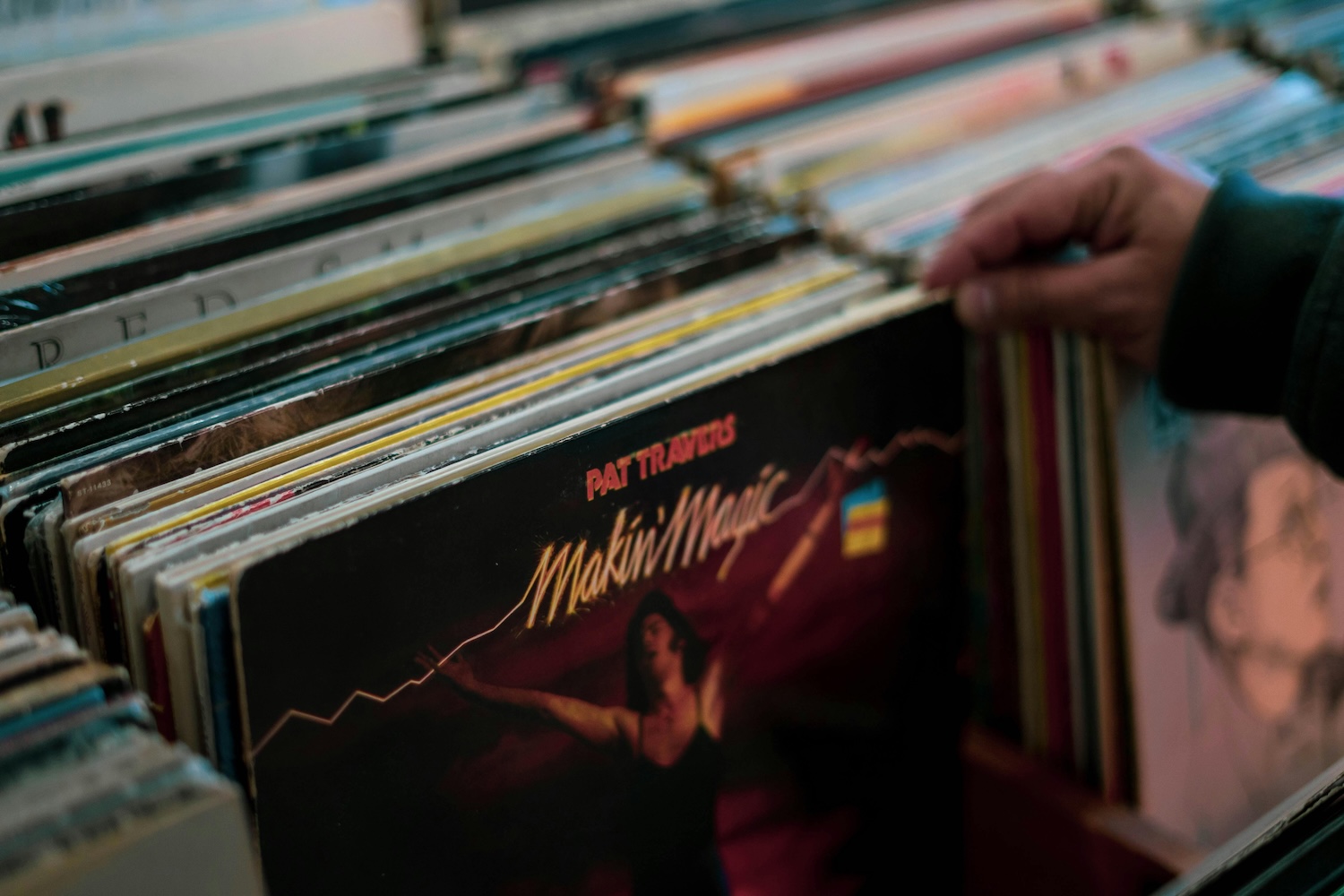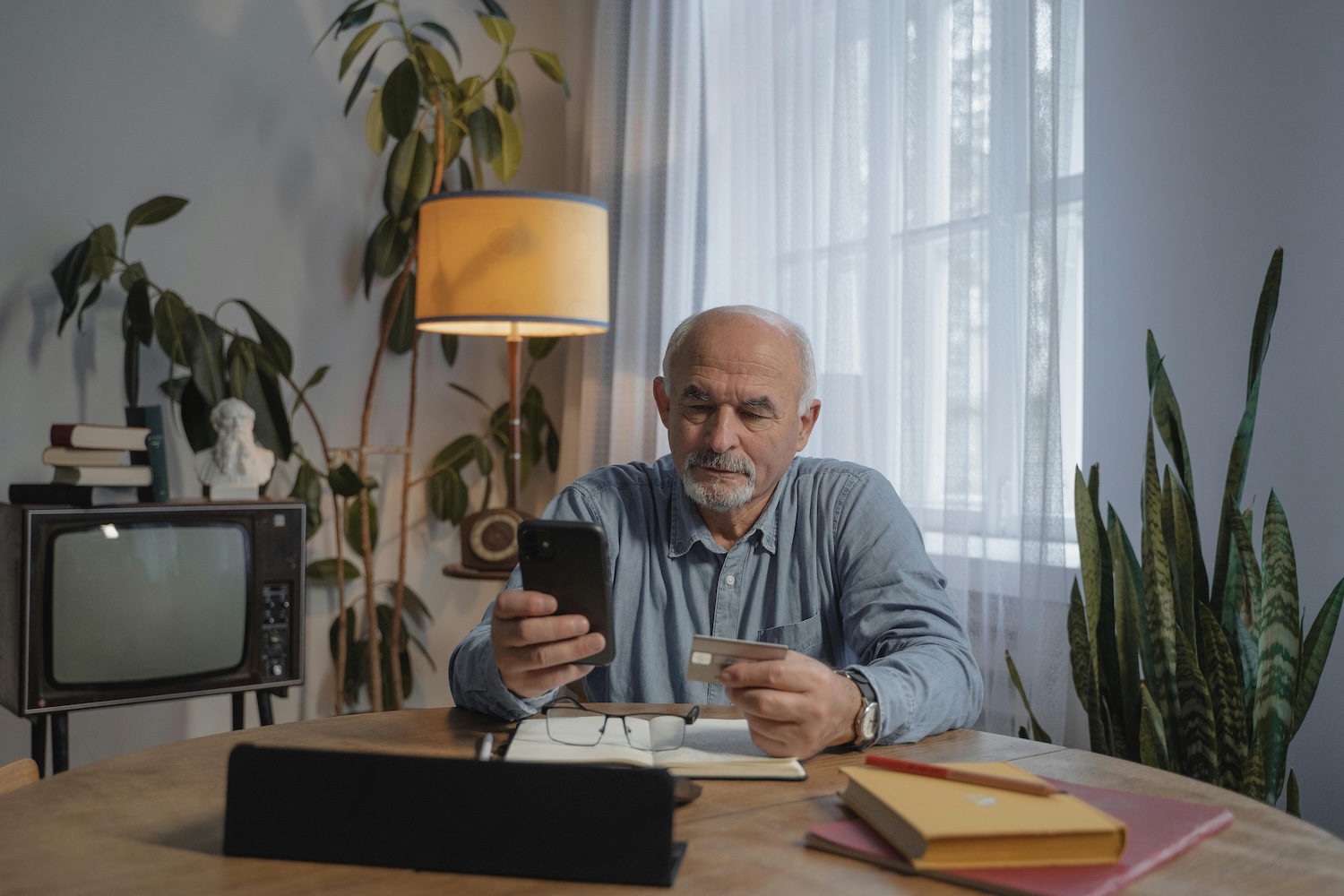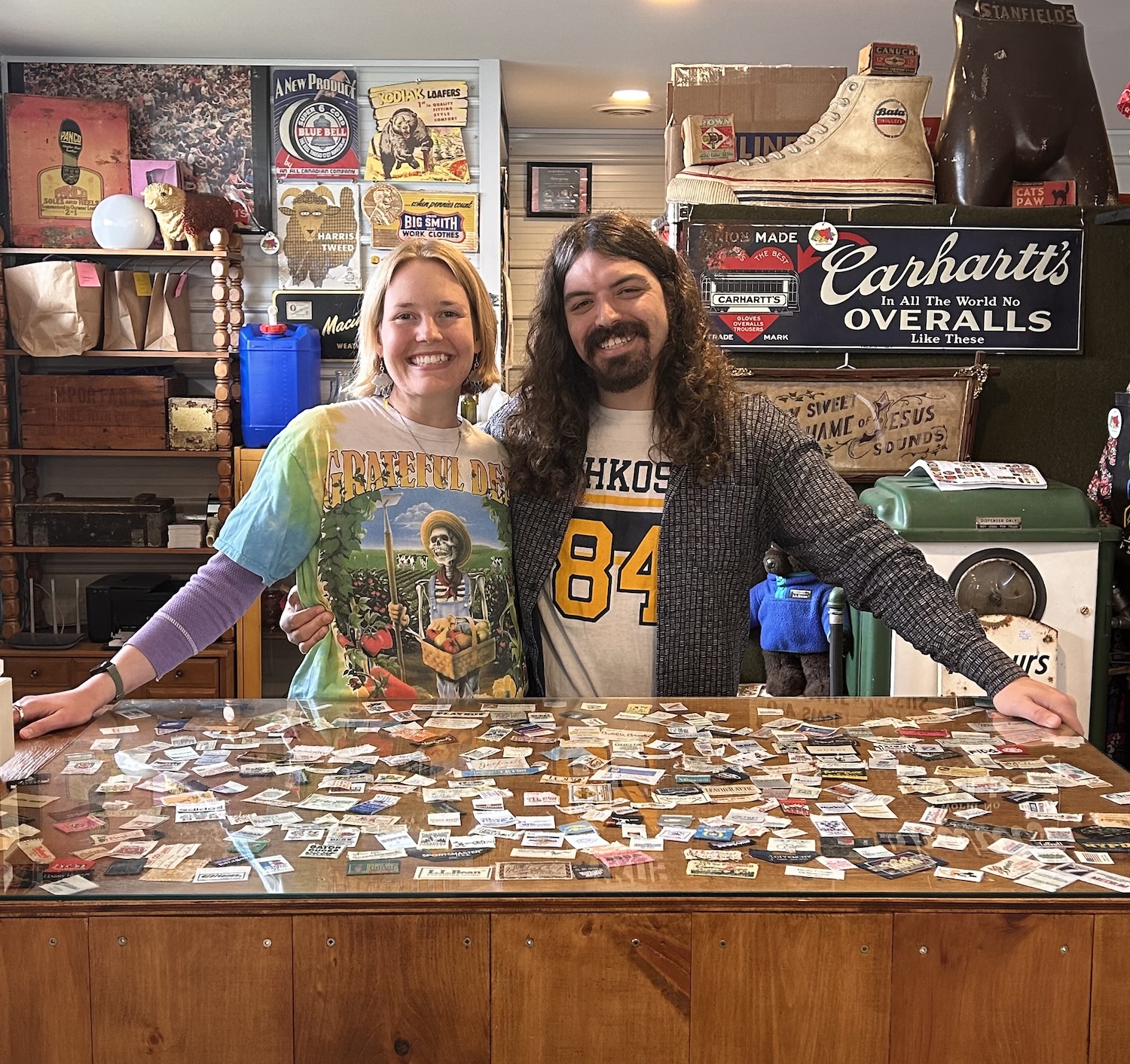
Sustainable shopping: Q&A with Meaghan Harris & Kelty Lewis, Good Habits
The co-founders of Toronto vintage shop Good Habits on representation in vintage and mindful shopping
“Millennial hustle” finds new meaning in Meaghan Harris and Kelty Lewis, the thirtysomething co-owners of chic Toronto vintage shop Good Habits. The women first met four years ago at a photo shoot.
In early 2020, Kelty, a professional makeup artist, food truck entrepreneur and sometimes model, was bartending at restaurant hotspot DaiLo and running Only, a small vintage clothing pop-up inside Ease, a slow fashion shop in the city’s West End. Meaghan, a graphic designer and photographer, was working as a tattoo artist at local studio Always.
When the pandemic hit and the pair lost their full-time jobs, they teamed up to open Good Habits, which features a rotating inventory of vintage clothing and accessories that are made to last. Here, they chat to The Vintage Seeker about the ethos behind their shop, and how mindful shopping drives more sustainable choices.
What led you to decide to go into business together?
Meaghan Harris: Kelty was already doing a vintage business, which I had shot some photos for as well. And we both discussed maybe partnering and building a new brand out of that.
But nothing ever lined up timing-wise, because we were doing a million jobs. Kelty was working full-time, I was working full-time — we both had our hands in so many things. And then once the pandemic happened, both of us lost our full-time work.
We thought, how do we move forward in a way where we can do something that we love and that we want to continue doing, and that is self-reliant and gives us autonomy?
Kelty Lewis: It’s been a dream of both of ours since we were little kids to own our own vintage stores.
MH: I’ve been shopping at Value Village since I was little, and my mom was always a collector. We always were taking things home from the garbage. She’d pull over to the side of the road anytime she’d see something and be like, “Oh, let’s take this home.”
We’ve both been living that way forever, and have been just natural collectors our whole lives. So this whole project has just come together in a really organic kind of manner.
Kelty, what about you? How did you get interested in vintage clothes?
KL: I have been obsessed with clothing my whole life. I’ve always been a shopaholic — it comes from my mom, my grandmother, my aunt. I remember when I was in my early 20s in Montreal and I was like, “I can't keep shopping, I have to get rid of this stuff, but it’s all in really good condition.” In those days, I’d go put a blanket on the street in Montreal and sell my stuff.
So it’s always been my flow for acquiring things — to just sell my clothes, even if it was for $3. Something comes in, something leaves. I’m trying to really have that flow in my life. It’s good for my closet, and my wallet!

You have a really great eye. Do you both do the sourcing for the shop?
MH: We do pretty much everything together. All creative decisions are made together, and when we're picking, we do it together. Even if we go by ourselves, we’re just sending photos back and forth. We’re both very opinionated so if something doesn't resonate for both of us, we will just leave it.
How do you divide the rest of the labour? What are your roles in running the shop?
MH: I went to OCAD, so I do the graphic design and photography. Although I’m facilitating the design, we choose stuff together. Kelty is more of the accountant and does the most of the modelling. When you’re a small business, you can’t afford to always be outsourcing the modelling. So luckily, we’ve been able to keep much of our stuff in house.

The branding is a lot of fun. It caught my eye right away.
KL: We took a long time to decide on our logo. It took us maybe three weeks to sleep on it and make sure it was the right font, and how spaced out it was. From the start, we were trying to really take our time with things and make sure that they align with both of us. Doing things the slow way, which ends up being the fast way overall.
What are you trying to convey with your creative direction?
KL: Just fun. We want to stand out and have pops of colour all the time because we just love colour. Colour is therapeutic, and it makes people happy. We like really graphic things.
MH: It speaks to both of our natural aesthetics. We want our brand to feel celebratory, and to feel fun and approachable to people. We’re kind of maximalists, even though we're minimal! We like a clean silhouette.

Your use of an older model stood out, because the Instagram vintage space skews young.
MH: Her name is Elizabeth, and she is an incredible model in Toronto. She’s worked for some of our favourite brands. She’s an actor, too. Both of us have worked with her before in shoots. I have photographed her before for Nouveau Riche Vintage and Kelty has done Elizabeth’s makeup once or twice.
KL: She’s just such a positive figure in the community as well. I was instantly drawn to her energy. She’s really fun.
MH: We were kind of refraining from shooting with models during the deep lockdown. You want to make sure people feel comfortable when you approach them to model for you — it’s a vulnerable topic that deals with identity and all sorts of sensitive issues.
So, we weren’t really asking people to model in the middle of the pandemic when it was at its worst, but now we’re really excited to work with lots of different people. That’s one of our biggest goals for the next few months.
KL: Having representation is a huge part of our ethos. Different body types, too.
MH: And different ages. Representation of as many sorts as possible. We want people to be able to see themselves when they’re shopping.
It looks so outdated when you’re just seeing this one body type over and over and over again, especially when it’s a pretty rare body type — the classic model size of 5’11” tall and 24-inch waist. Yes, there should be that model, but then there should also be many other body types represented, so we want to do that.
Continued below
Fresh advice about old stuff
Download our free tip sheets
Continued from above
How did you come up with the name Good Habits?
MH: The things you have in your home become such a personal connection, and they inform the rituals of what you do every day. It’s that feeling you get when you wake up and you put on that comfy pant and pour a coffee into your favourite mug.
Those things feel so ritualistic, and they are the habits that we’re trying to speak to — not so much like, eat veggies and do yoga. It pertains to the connection between beauty and doing things that you repeat over and over. The beauty of having things in your life that you know you’ll love for a really long time.
KL: We hope that people feel that when they put on that perfect pair of jeans that we’ve found them, or just the happiness that comes from those objects that they get to look at now.

I like that mindfulness. People are trending that way with the growing interest in sustainability — they are thinking a little bit harder about what they’re buying.
MH: Yeah, it’s nice. Vintage also leaves space to have more of a personal connection to your clothing, rather than buying things that are dictated by the trends that are happening, and fast fashion forcing things into your face. If you see it enough times, you’re like, okay, I guess I’ll get this because I’ve seen it so many times now that it must be what I need.
KL: Vintage is even more sustainable than perfectly, ethically made slow-fashion pieces, because it already exists. So, we’re just trying to push that into the future, and get people to realize that the earth just does not need to make more clothes. It simply doesn’t. There are billions of pounds of it everywhere.

And when you find out what is happening to those billions of pounds — that it's not all coming to vintage shops. Much of it is going to be burned.
KL: This is such an important point that you’re bringing up. Something to consider when you’re donating clothing is whether or not the item is in good enough condition to still be of use for another person.
Unfortunately, although donating comes from a good place, when items are of such poor quality that they can no longer be used — sometimes it is better to recycle or put them into local garbage.
Otherwise they may travel from the global north to the global south and end up in their landfills. This is yet another form of colonialism. We are not experts on this by any means and are still learning, but it is something to be continuously mindful of.
MH: We also believe that slow fashion and sustainability and having that kind of mindset doesn’t have to be all or nothing. A lot of times, the conversations around slow fashion and around sustainability are inaccessible to most people, and are catered to those who are wealthier.
There are ways to consider sustainability in your lifestyle that don’t have to cost money. You can interact with slow fashion or with sustainability in ways that are easy and that just become habit. But it’s a tricky concept because I think it leaves a lot of people out of the conversation often.
Tell us about your retail space. What vibe were you going for with the shop?
KL: It’s a hidden gem. It’s in a historical building. High ceilings and exposed brick and we have a little kitchen. We just want people to come in and feel like they’re in like a gallery, but they're comfortable enough to sit down and chat with us for a bit. We want it to be a unique experience that we can offer people.
We don’t want it to feel like a typical retail space. We know our clients’ names. We have repeat customers and we want to ask how their week is going. We’re very personable people so we wanted to create a space that caters to making connections.

What are your goals for the year now that restrictions are lifted?
MH: We love doing online and e-commerce, it’s definitely fun, but we miss the whole other side of things. We really enjoy talking to people. We like finding people their perfect clothing. And we would love to do events, and have other vendors in here. We’d love to do pop-ups in other people’s spaces as well. We’re very excited to talk to real people in real life again.
KL: And to network with other makers. That’s so important to us. We have such a beautiful new community that has been so supportive of us and we just want to share that space and energy with those people more genuinely, and in person.
Is that why you decided to open a bricks-and-mortar shop right away instead of doing online only?
MH: Yes, but the other reality is, if you’re going to run an online business, you need storage, you need a photography studio. So we decided, let’s take a risk. Let’s commit to doing this and do it the right way. Make it professional, make it something that functions and is efficient, and have space to be creative in. It didn’t really feel like much of a choice, in a sense.
What’s the best business decision you’ve made so far?
KL: Stopping our other jobs, working together and committing. We’re both such workaholics and have several skills. To finally meditate on it and think, “Okay, we're going to drop our three other jobs and commit to this” — I think that was one of the biggest risks and steps to creating Good Habits. It was good for us, and for our brains.
MH: Our 20s were just such a scramble of trying so many things. I didn’t say no to almost anything. It’s nice to have boundaries about what I choose to do and what I don’t do and it feels really peaceful to just have one thing that I’m putting my all into, for both of us.
KL: I recently let go of my first business — I owned a food truck and sold it. So that’s also been a great thing for me to let go of and then pour myself fully into this, because it’s where my true passion lies.

Stores are open now. Where do you like to shop for vintage in Toronto?
MH: I honestly think that Toronto has some of the best vintage of any city. Any time I travel anywhere I’m like, “Why bother? Toronto’s got the best stuff!” Chosen, 96 Tears. The Wanderley, Nouveau Riche. Shopcoat is so good; they're a bit newer and they're incredible.
KL: Kensington Market is just such a cultural staple for vintage, there’s so many good spots all the time. SubRosa. Bungalow is always so fun. I love how organized it is and categorized.
MH: Siberia Vintage, Penny Arcade.
KL: It’s cool to finally feel part of that community. We also just love Value Village. We love thrifting and that whole feeling of getting such a rush when we walk through the doors because we enjoy the process of finding the things.
MH: When it’s not curated, it’s so exciting, too. I love going to a beautifully curated store and being like, “Wow, this person has such an interesting vision.” I like seeing items that I might not have picked myself, and then feeling like, “Oh, this has an interesting story to it now.”
But going to Value Village and it’s a fully blank slate? There's something very special about having things fully out of context, where you can create your own story and narrative around the pieces that you’re pulling.
Meaghan Harris & Kelty Lewis, Co-Founders, Good Habits
1363 Dundas St. W. | Toronto, ON
This interview has been condensed.
Thank you for valuing our work!
Support our work to see this page.
You’ve got a good eye, but this gem is only available for members. Register for a plan or upgrade your current one to peek behind this vintage curtain, or log in below.















